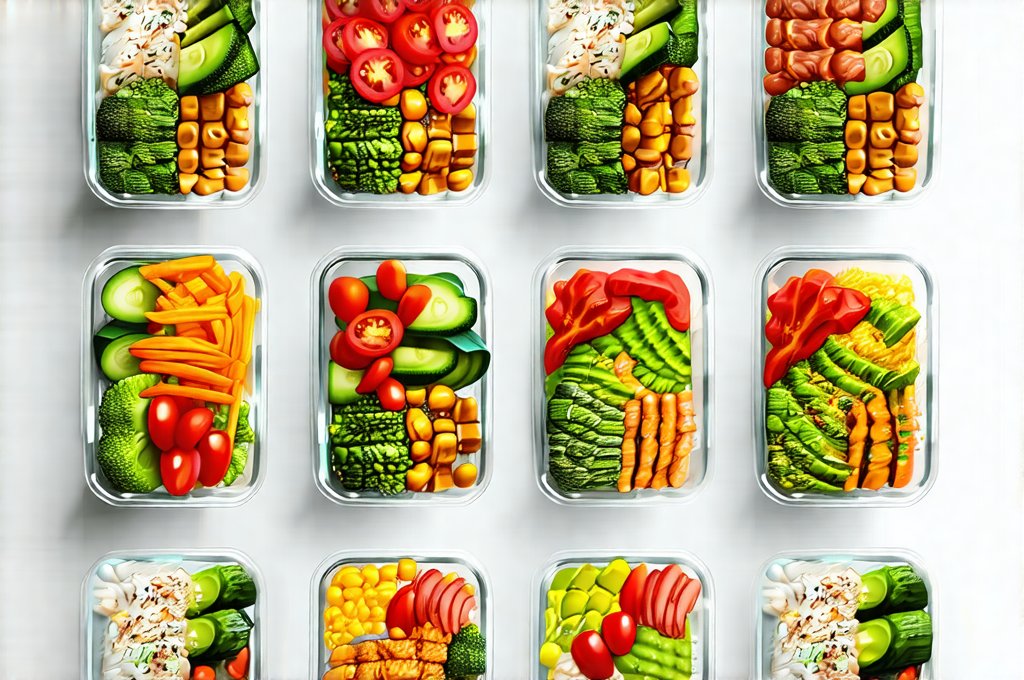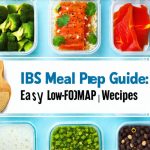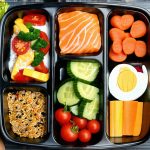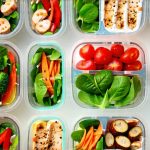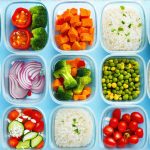Constipation is a surprisingly common digestive issue affecting millions worldwide. It’s often dismissed as an inconvenience, but chronic constipation can significantly impact quality of life, leading to discomfort, bloating, and even more serious health concerns if left unaddressed. Many factors contribute to constipation, including diet, hydration levels, physical activity, stress, and underlying medical conditions. While medication is sometimes necessary, a powerful first line of defense against constipation lies in dietary changes – specifically, increasing fiber intake. However, simply knowing you should eat more fiber doesn’t always translate into consistent results. Life gets busy, meal planning falls by the wayside, and reaching for convenient (but often low-fiber) options becomes all too easy.
This is where meal prepping comes in as a game-changer. Taking dedicated time to prepare meals – or components of meals – in advance can drastically increase your chances of consistently consuming a fiber-rich diet, even amidst a hectic schedule. The key isn’t just adding fiber; it’s strategically incorporating it into delicious and satisfying meals that you want to eat. This article will explore practical, constipation-safe meal prep ideas focusing on high-fiber foods, designed to make healthy eating sustainable and enjoyable. We’ll move beyond bland bran muffins and demonstrate how to create vibrant, flavorful meals that support digestive health without sacrificing taste or convenience. Understanding the connection between poor gut motility and stress can also help you build a more holistic approach to digestive wellness.
High-Fiber Meal Prep Foundations
The foundation of any successful high-fiber meal prep strategy begins with understanding which foods are naturally rich in fiber. We’re talking about more than just adding a tablespoon of flaxseed to your smoothie (though that’s great too!). Think whole grains like quinoa and brown rice, legumes such as lentils and chickpeas, a rainbow of fruits and vegetables – especially those with edible skins – and healthy fats like avocado. Building meals around these staples provides a solid base for digestive regularity. When prepping, focus on versatility. Cook larger batches of grains or roast multiple types of vegetables at once to create building blocks for various dishes throughout the week. This saves time and encourages experimentation. You might even find meal prep containers helpful!
A common mistake in increasing fiber intake is doing it too quickly. This can actually lead to bloating, gas, and discomfort, defeating the purpose. Gradually increase your fiber consumption over several weeks, allowing your digestive system to adjust. Simultaneously, ensure you’re adequately hydrated; water helps fiber move through the digestive tract efficiently. Aim for at least eight glasses of water per day. Finally, remember that different types of fiber have different effects. Insoluble fiber adds bulk to stool (think wheat bran), while soluble fiber dissolves in water and forms a gel-like substance (found in oats and beans). A balance of both is ideal for optimal digestive health. Being mindful of high protein diets and ensuring adequate fiber intake can prevent discomfort too.
Building Breakfasts That Beat Bloat
Breakfast often gets skipped or relegated to quick, low-fiber options like toast or cereal. But it’s an excellent opportunity to kickstart your digestion with a fiber boost. Overnight oats are a fantastic meal prep option – combine rolled oats (not instant), chia seeds, plant-based milk, and your favorite toppings in a jar the night before for a ready-to-go breakfast. Berries, sliced banana, chopped nuts, or a sprinkle of cinnamon add flavor and further increase fiber content. Another excellent choice is a hearty breakfast burrito filled with scrambled eggs, black beans, spinach, and avocado wrapped in a whole-wheat tortilla.
For those who prefer savory breakfasts, consider prepping a batch of quinoa porridge. Quinoa is naturally gluten-free and provides a complete protein source alongside a good dose of fiber. Top it with sautéed vegetables, a poached egg, and a sprinkle of herbs for a satisfying and nutritious start to the day. A key consideration when prepping breakfast is portion control. Even healthy foods can contribute to digestive discomfort if consumed in excessive amounts. Pre-portioning your breakfasts into individual containers helps maintain balance and prevents overeating. Considering designing a gut-healing day can help you prioritize digestive health from the start of your day.
Lunchbox Fiber Powerhouses
Lunch is another meal where convenience often trumps nutrition, leading to reliance on processed foods with minimal fiber. Instead of pre-packaged snacks and sandwiches on white bread, focus on building lunchboxes around whole grains, legumes, and vegetables. A lentil salad with roasted sweet potatoes, chopped kale, and a lemon-tahini dressing is both delicious and incredibly filling. Quinoa salads with chickpeas, cucumbers, tomatoes, and feta cheese offer another excellent option.
Pre-cut vegetable sticks (carrots, celery, bell peppers) paired with hummus or guacamole provide a healthy snack that adds fiber to your lunchbox. Don’t underestimate the power of fruit! An apple, pear, or orange provides a natural sweetness alongside valuable fiber. Consider prepping a large batch of roasted vegetables on Sunday – broccoli, Brussels sprouts, and carrots all roast beautifully and can be added to salads, grain bowls, or enjoyed as a side dish throughout the week. Remember, proper storage is crucial for maintaining freshness and preventing foodborne illness. Thinking ahead with meal prep ideas can save you time and stress during the week.
Dinner Prep: Batch Cooking For Digestive Ease
Dinner is often the most challenging meal to prep due to time constraints after a long day. However, batch cooking can make it significantly easier. A large pot of chili made with beans, lentils, diced vegetables, and lean protein (ground turkey or chicken) provides multiple servings for dinner and leftovers for lunch. Shepherd’s pie topped with mashed sweet potatoes instead of white potatoes increases the fiber content while still providing comfort food satisfaction.
Roasted chicken and roasted root vegetables (carrots, parsnips, beets) are another excellent batch-cooking option. The chicken can be used in salads, sandwiches, or as a main course alongside the roasted vegetables. When prepping dinner, consider incorporating different cooking methods to add variety and texture. Steaming, roasting, grilling, and sautéing all offer unique flavor profiles and nutritional benefits. Finally, don’t forget about spices! Many spices – such as ginger, turmeric, and cumin – have digestive benefits in addition to enhancing the flavor of your meals. If you struggle with indigestion, understanding high-fat diets and fiber intake can be helpful.

